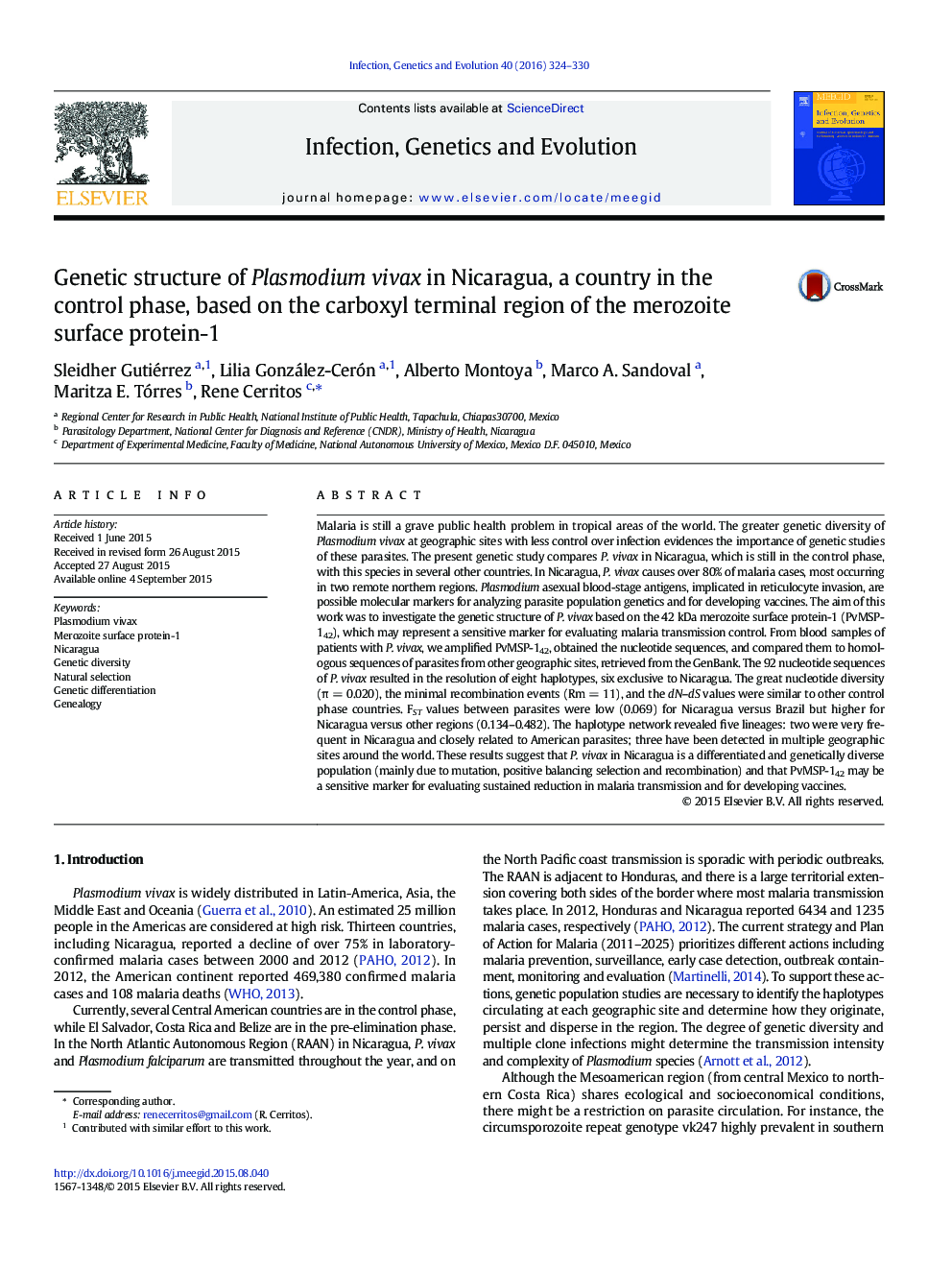| کد مقاله | کد نشریه | سال انتشار | مقاله انگلیسی | نسخه تمام متن |
|---|---|---|---|---|
| 5908391 | 1570163 | 2016 | 7 صفحه PDF | دانلود رایگان |
- The pvmsp142 genetic diversity in Nicaragua was lower than other countries in control phase.
- Pvmsp133 exposed strong positive and negative selection, and pvmsp119 was conserved.
- Nicaraguan haplotypes reveal processes of migration and local diversification.
- P. vivax in Nicaragua shows a differentiated population and micro heterogeneity.
- The haplotype network exposed five Nicaraguan lineages.
Malaria is still a grave public health problem in tropical areas of the world. The greater genetic diversity of Plasmodium vivax at geographic sites with less control over infection evidences the importance of genetic studies of these parasites. The present genetic study compares P. vivax in Nicaragua, which is still in the control phase, with this species in several other countries. In Nicaragua, P. vivax causes over 80% of malaria cases, most occurring in two remote northern regions. Plasmodium asexual blood-stage antigens, implicated in reticulocyte invasion, are possible molecular markers for analyzing parasite population genetics and for developing vaccines. The aim of this work was to investigate the genetic structure of P. vivax based on the 42 kDa merozoite surface protein-1 (PvMSP-142), which may represent a sensitive marker for evaluating malaria transmission control. From blood samples of patients with P. vivax, we amplified PvMSP-142, obtained the nucleotide sequences, and compared them to homologous sequences of parasites from other geographic sites, retrieved from the GenBank. The 92 nucleotide sequences of P. vivax resulted in the resolution of eight haplotypes, six exclusive to Nicaragua. The great nucleotide diversity (Ï = 0.020), the minimal recombination events (Rm = 11), and the dN-dS values were similar to other control phase countries. FST values between parasites were low (0.069) for Nicaragua versus Brazil but higher for Nicaragua versus other regions (0.134-0.482). The haplotype network revealed five lineages: two were very frequent in Nicaragua and closely related to American parasites; three have been detected in multiple geographic sites around the world. These results suggest that P. vivax in Nicaragua is a differentiated and genetically diverse population (mainly due to mutation, positive balancing selection and recombination) and that PvMSP-142 may be a sensitive marker for evaluating sustained reduction in malaria transmission and for developing vaccines.
Journal: Infection, Genetics and Evolution - Volume 40, June 2016, Pages 324-330
